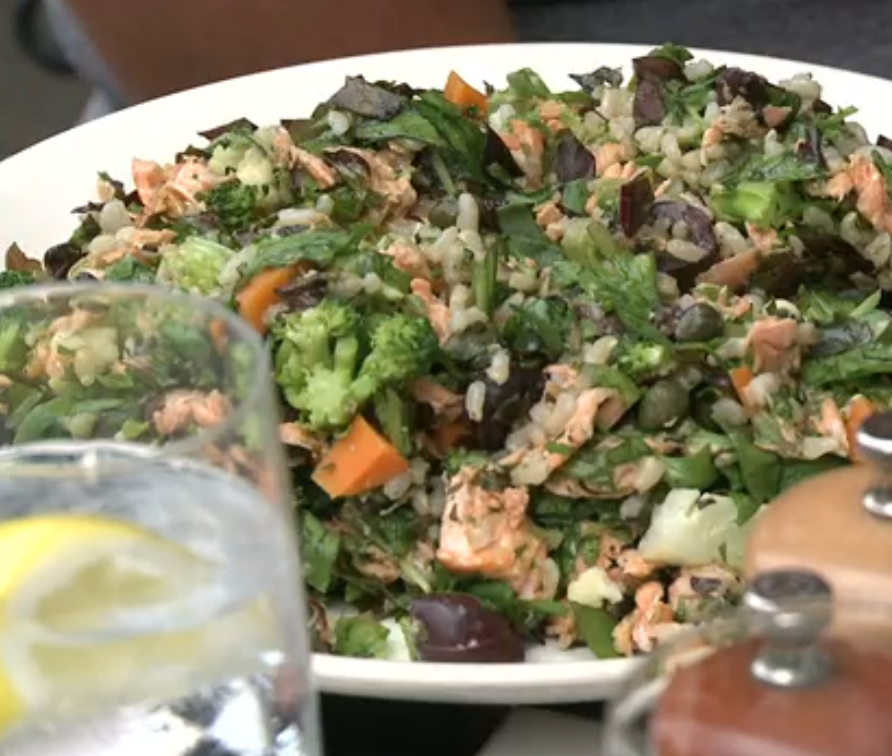Carnaroli rice is a variety of white rice with elongated grains, used in risottos and is among the most common in Italy.
- Grain length in mm : 7,0/9,0
- Grain width in mm : 3,0/3,50
- Thickness in mm : 2,0
The Amylose content is optimal, 25%, so it has the right stickiness and is used in rice salads and side dishes.
Considering the protein content in the commercial classification (1), Carnaroli rice has been placed in the high class, with 25.4% Amylose (polysaccharide sugar), but with a high content, 6.5%, of protein (2).
High (compared to other species of rice) also the content of Gamma oryzanol with 1231.5 mgKg-1DW.
Rice is a grass and one of the most common and oldest foods. Just think that its history dates back 7,000 years.
It is harvested from September to October from a small plant called Oryza, which is fed by flooded soil.
The genus Oryza has many species, here some of the best known:
- Oryza sativa, white rice grown all over the world
- Oryza glaberrima, cultivated in Africa
- Oryza officinalis, cultivated in Vietnam
- Oryza australiensis, cultivated in Australia
- Oryza rhizomatis
- etc.
Italy is the first European producer with crops in the provinces of Vercelli, Novara, Pavia, Biella, Milan, Lodi and others.
The rice is composed of the grain and its husk and husk wrapper.
Once harvested, it is not edible and must be worked to remove the husk and other parts.
After the processing that is called dehusking you get the
Wholemeal rice, with a subsequent refining process, is used to produce the
The varieties of rice are numerous, over 100,000 and each has different taste and cooking times.
In general, rice contains more than 100 bioactive substances mainly in its bran layer including phytic acid, isovitexin, gamma-oryzanol, phytosterols, octacosanol, squalene, gamma-aminobutyric acid, tocopherol and derived from tocotrienol (3), antioxidants.
It does not contain beta carotene (provitamin A) and has a very low iron and zinc content (4).
In rice bran there are bioactive phytochemicals that exert protective actions against cancer that involve the metabolism of the host and the intestinal microbiome. A diet based on rice bran has shown positive effects in reducing the risk of colon cancer (5).
Rice studies
Allergies: Be careful, rice contains a certain amount of lactose.
The most common types of rice used are :
- Arborio : large grains, the most common in Italy
- Ribe : elongated grains.
- Thaibonnet : medium, elongated and fine grains
- Rome : large grains
- Basmati : thin and elongated grains. Grown in Pakistan and India
- Carnaroli : large grains
- Vialone nano : large, round grains
- Original or Balilla : small round grains
- Jasmine : fine grains of Asian origin
- Red : red, small and narrow grains
- Wild : Zizania palustris
- Baldo : large, shiny grains
- Ganges : from India
- Footboard : releases a lot of starch
- Venus : from China and the Po Valley
- Patna : from Thailand. Long and narrow grains
- Sant'Andrea : Thick and long grains. Releases a lot of starch
Rice viruses and pests: Pseudomonas aeruginosa, Rice yellow mottle virus, Magnaporthe oryzae , Rice Tungro Bacilliform Virus , Lissorhoptrus oryzophilus Kuschel, Oebalus pugnax, Xanthomonas oryzae
References________________________________________
(1) Suwannaporn P, Pitiphunpong S, Champangern S. Classification of rice amylose content by discriminant analysis of physicochemical properties. Starch. 2007;59:171–177. doi: 10.1002/star.200600565
(2) Deep sequencing transcriptional fingerprinting of rice kernels for dissecting grain quality traits Chiara Biselli, Paolo Bagnaresi, Daniela Cavalluzzo, Simona Urso, Francesca Desiderio, Gabriele Orasen, Alberto Gianinetti, Federico Righettini, Massimo Gennaro, Rosaria Perrini, Manel Ben Hassen, Gian Attilio Sacchi, Luigi Cattivelli, and Giampiero Valè BMC Genomics. 2015; 16: 1091. Published online 2015 Dec 21. doi: 10.1186/s12864-015-2321-7
(3) Bidlack W. Phytochemicals as bioacive agents. Lancaster, Basel, Switzerland: Technomic Publishing Co., Inc; 1999. pp. 25–36.
(4) Single genetic locus improvement of iron, zinc and β-carotene content in rice grains. - Singh SP, Gruissem W, Bhullar NK. - Sci Rep. 2017 Jul 31;7(1):6883. doi:10.1038/s41598-017-07198-5.
(5) Modulation of plasma and urine metabolome in colorectal cancer survivors consuming rice bran. Zarei I, Oppel RC, Borresen EC, Brown RJ, Ryan EP. Integr Food Nutr Metab. 2019 May;6(3). doi: 10.15761/IFNM.1000252.
![]() Carnaroli rice
Carnaroli rice 


